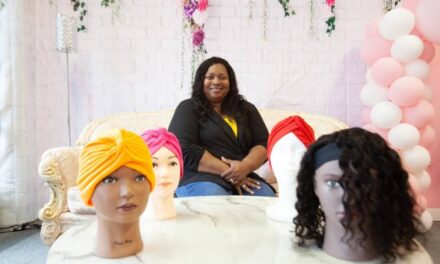
In “The Life and Times of Hannah Crafts,” Gregg Hecimovich pieces together the story of a woman who fled slavery, and whose manuscript was lost for more than 150 years.
It was one of the most dramatic discovery stories in recent literary history. In 2001, the scholar Henry Louis Gates Jr. announced that he had discovered the earliest known novel by an African American woman, a never-published tale purportedly written in the 1850s by an enslaved woman named Hannah Crafts.
The 301-page manuscript, a harrowing tale of violence and sexual abuse that also brazenly mocked the self-regard of enslavers, was published in 2002 as “The Bondwoman’s Narrative.” It hit the New York Times best-seller list, even as some experts questioned whether the novel, with its sensational plot twists and references to Victorian novels, was really the work of an enslaved woman.
Doubts receded in 2013, when Gregg Hecimovich, a little-known literary scholar, announced that he had tracked down the real-life author. “Hannah Crafts,” he argued, was the pen name of Hannah Bond, an enslaved house servant who, disguised as a man, had escaped from a plantation in North Carolina owned by John Hill Wheeler in 1857, shortly after her 30th birthday.
Hecimovich’s identification drew front-page headlines. But it wasn’t the half of Crafts’s story.
Now, in a new book, “The Life and Times of Hannah Crafts: The True Story of ‘The Bondwoman’s Narrative,’ ” Hecimovich gives the author a sweeping, densely researched biography, beginning with the arrival of her enslaved ancestors in North Carolina in 1779 and ending with her death in New Jersey around 1905. He also chronicles the lives of others in her circle, providing a rich, complex view of slavery as it was actually lived.
“The Bondwoman’s Narrative” is one of only two known novels by enslaved or formerly enslaved Americans. It’s also the rare account by an enslaved person, fictional or nonfictional, to come to us complete and in her own handwriting, seemingly untouched by the white editors who shaped most works by African Americans published before the Civil War.
William Andrews, an editor of the “Norton Anthology of African American Literature,” said that Hecimovich’s book itself is “truly an extraordinary event,” given how few full-scale biographies of enslaved women have been written at all.
“The window you get into her life as an enslaved woman, her relationships to white people and how they actually played out, is something we just don’t have that much of,” Andrews, a professor at the University of North Carolina, said.
The biography, which Ecco is publishing on Oct. 17, also vindicates many of the early hypotheses advanced by Gates, who discovered the Crafts manuscript in 2001 at an auction. But in an interview, Gates, who contributed an introduction, said Hecimovich’s rich account went well beyond merely proving the author’s identity.
“The level of research this guy has accomplished is just astonishing,” he said.
“There’s so much more about the experience of the African American people still buried in archives, remaining to be discovered,” he added. “I hope this contributes to a renaissance.”
Hecimovich, a specialist in Victorian literature whose first book was a study of riddles in Dickens and Keats, may not seem like the obvious person to have devoted nearly 20 years to tracking Crafts. He began by chance in 2003, when the scholar Hollis Robbins (the co-editor, with Gates, of a collection of scholarly essays about “The Bondwoman’s Narrative”), contacted East Carolina University, looking for help with research in the Wheeler family papers.
Hecimovich, who was teaching there at the time, stepped forward. “I’ve always been a complete archive nerd,” he said. “As an undergraduate, everyone would go to the Carolina football game. I’d be in the back of the line, and when no one was looking I’d sneak into the library.”
With Robbins’s and Gates’s encouragement, he ultimately took over the search, digging through obscure records in local historical societies, libraries and family attics. Initially, he assumed he would find evidence that the novel had been written by a member of the Wheeler family with a grudge. That an enslaved woman could be the author, he writes, seemed “too good to be true.”
It was a doubt that Crafts had anticipated. “I ask myself for a hundredth time, How will such a literary venture, coming from a sphere so humble, be received?” she wrote in a brief preface.
Hecimovich’s skepticism, he said, lifted as he learned that the Wheeler family valued literacy among their household slaves, sometimes even employing them as personal secretaries. Eventually, he drew up a list of six plausible candidates, all enslaved women connected with the Wheeler family.
Hecimovich, now a professor at Furman University in South Carolina, calls it “slow research” — “really slow,” he added. If there was no singular “aha!” moment, the book recounts plenty of dramatic archival lightning strikes along the way.
In 2012, Hecimovich learned about a notebook that had been found in the brush outside a vacant house in Bertie County, N.C., amid trash apparently discarded by intruders looking for valuables. It was a compilation, written in the 1950s, of stories handed down in a family whose ancestors were enslaved on a plantation near where Crafts lived, which recounted the “privileges” enjoyed by some house slaves, including learning how to read.
Other sources were safe in archives, but had gone unnoticed. The papers of Wheeler, who served as ambassador to Nicaragua, are held at the Library of Congress. But no one seemed to have looked at his almanacs, where he had the habit of making marginal notes. In one, Wheeler had jotted a list of enslaved people in his household, which helped Hecimovich build his list of possible authors.
And then there was the unexpected connection with … Beyoncé?
As it turned out, a scene in the singer’s 2016 “Formation” video was filmed in the portrait gallery of the Louisiana plantation house built by descendants of Thomas Pugh, the planter who brought Crafts’s enslaved ancestors from Jamaica to North Carolina. Her novel also includes a scene set in a portrait gallery, which similarly mocks the aristocratic pretensions of enslavers.
Hecimovich noted that another North Carolina historian, David Cecelski, had also made that connection. In the book and in conversation, he repeatedly emphasizes that historical research is a “team sport,” and that his discoveries only really make sense when braided together with the work of many others, including Black women historians who have pushed the experiences of enslaved women, and their vulnerability to sexual coercion, to the scholarly forefront.
Many of Hecimovich’s findings will also be used in a new edition of “The Bondwoman’s Narrative” that he’s working on with Gates. They include discoveries about connections between incidents in the novel and real-life events, including some that have struck critics as too extreme to have really happened, like a gruesome scene where an enslaved woman is hung from a tree and tortured to death after refusing to kill her dog.
“It was so horrible, even sympathetic people found it too much,” Gates said of the scene. But Hecimovich shows that something similar had happened to Crafts’s grandmother, Rosea, who had been tortured and murdered by her enslaver in 1822.
Hecimovich also uncovered how Crafts came to write such a self-consciously literary text. In a 2003 essay, Robbins had already noted that the novel’s author showed a direct familiarity with Charles Dickens’s “Bleak House,” which had only recently been published.
The novel, Hecimovich learned, was in the library of a Baptist women’s college next door to the Wheeler house in Murfreesboro, N.C., where Crafts lived from 1852 to 1856. He also found student exercises, which strongly echoed some passages in Crafts’s manuscript, suggesting that she may have gained access to the school’s lessons.
Hecimovich also unearthed clues to Craft’s escape, which may have involved people she met in 1856 and 1857 while living with the Wheelers in Washington, where she attended the First Baptist Church, a hub of the city’s Underground Railroad.
Shortly after the Wheelers’ return to North Carolina, family papers indicate, there was some kind of household upheaval, which resulted in Crafts being banished from the main house and seemingly sent — like the protagonist of her novel — to work in the fields.
Then, Hecimovich writes, “she ran.”
Hecimovich traces her to upstate New York, and then to New Jersey, where she lived for a time in Timbuctoo, an all-Black settlement, and worked as a schoolteacher. She married Thomas Vincent, a pastor, and ultimately settled in Burlington, N.J., where she disappears from the record sometime between 1905 and 1910.
Crafts left no known descendants, as well as a lingering mystery: Why did she never publish her novel?
After Emancipation, interest in stories about the brutality of slavery declined. And after her marriage, Hecimovich writes, Crafts may simply have achieved financial security and happiness.
But he also speculates that, as Hannah Vincent, she may well have published in Black periodicals, where he hopes other scholars will now dig.
“I feel like I’ve done what I can do,” he said. “Smarter people are going to take what I’ve done and do more.”




